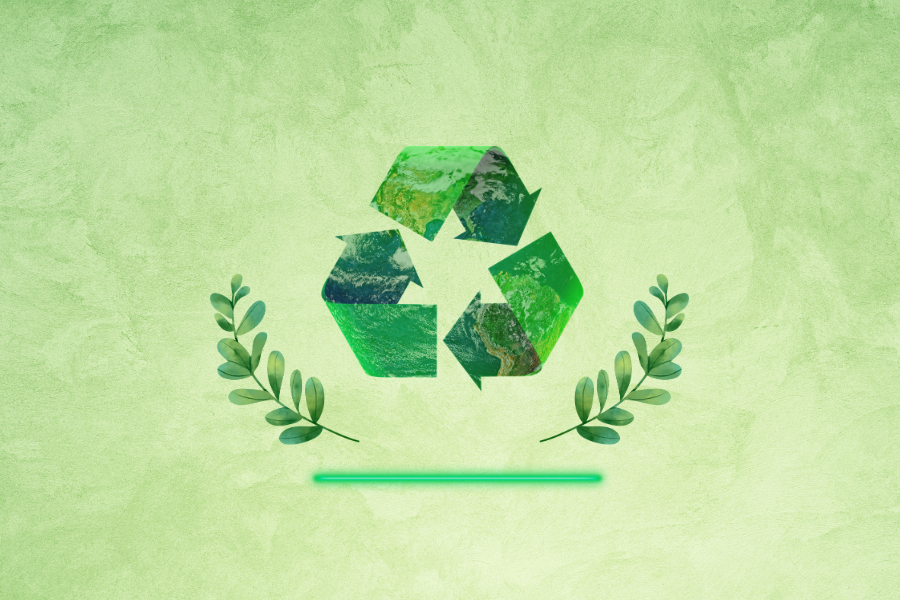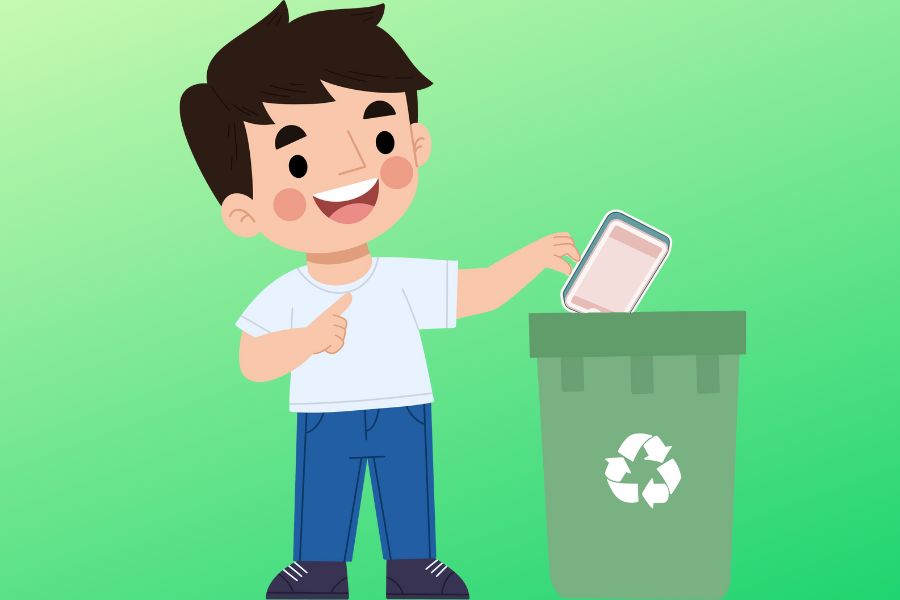HOT OFFER! Save $180 on selected internet plans + get beIN SPORTS CONNECT included!...Use promo code BEIN30 at checkout! Hurry, limited time only!
Recycle Your Old Mobile Phone & Accessories in 7 Easy Steps
Mobile Phone & Internet Blog | MATE | 27 March 2024

Mobile Phone Recycling: How to Recycle Your Old Phone
Mobile phones are, undeniably, an indispensable part of modern life. With each new advancement, mobile phones become more intuitive, more powerful, and now come equipped with an ever-increasing amount of camera lenses. However, with these rapid technological advancements, smart devices quickly become outdated, leading us to replace them more often. This trend has given rise to a serious global issue: a growing pile of e-waste that’s culminating right in our own backyard.
Mobile phone recycling, and recycling other forms of e-waste, is one way to combat this issue and take an important step towards helping our overburdened environment.
What is e-waste?
E-waste, or electronic waste, refers to discarded electrical or electronic devices. This includes a wide range of products, such as:- mobile phones
- batteries and chargers
- computers
- TVs
- appliances, such as microwaves and kettles.
By 2030, the Federal Government estimates that Australia’s e-waste generation will rise by nearly 30% to 657,000 tonnes, up from 511,000 tonnes in 2019. These statistics paint a pretty grim future for our country and the environment if we don’t start doing more to help reduce e-waste.
Why is recycling e-waste so important?
Recycling e-waste is important for a number of reasons. Firstly, it reduces the amount of hazardous materials ending up in landfills, where they can leach toxins into the ground. Some of these harmful chemicals come from mobile phone batteries and other types of batteries. These toxins can enter soil and groundwater, which not only affects our fragile ecosystem, but can also affect human health, too. This is because groundwater is a major source of fresh water and has domestic, agricultural and industrial uses. Contaminated groundwater can lead to the spread of waterborne diseases and exposure to toxic chemicals, affecting the quality of drinking water and the safety of food crops irrigated with polluted water.
Secondly, recycling e-waste conserves valuable natural resources. Many electrical devices, including your mobile phone, actually contain precious metals and valuable minerals. These mobile phone components require extensive energy and natural resources to mine and process. By recycling, we can recover these materials, lessening the demand for new raw materials.
On top of this, by recycling e-waste and giving these precious metals and minerals a second life, we’re reducing the environmental footprint that’s associated with mining and production. Recycling e-waste means fewer new products need to be made, which in turn reduces the carbon footprint associated with these processes.
Recyclable materials inside your mobile phone
We’ve mentioned that there are heaps of precious minerals and metals inside your everyday electronic appliances, including your mobile phone. These materials can all be recycled and reused, including gold, silver, and copper, alongside other valuable components such as palladium and platinum. These metals are not only scarce but also demand significant energy and natural resources to extract and refine.
But beyond precious metals, mobile phones contain various plastics and glasses that, when recycled, can be repurposed for new products, reducing the need for new materials. Recycling these components is critical, as it not only conserves finite natural resources but also prevents the environmental damage from mining and processing new materials.
How to recycle old mobile phones and accessories
In a world where the turnover rate for mobile technology is higher than ever, knowing how to responsibly recycle old phones is crucial. Maybe you have a broken mobile phone that can’t be fixed, or you’re hoarding old phones just in case your current phone breaks. But the truth is, even the spare phones you have collecting dust at home are contributing to e-waste. While they’re sitting in a drawer somewhere, the precious metals and minerals inside them are not being given the opportunity to be recycled and reused.

Recycle your phone in 7 easy steps
- Backup your data: Before anything else, ensure all your data is backed up. Use cloud services or transfer your data to a computer so you don’t lose any precious photos, contacts, or files.
- Factory reset: To protect your privacy, perform a factory reset to erase all personal information from the device. This can usually be done through the phone’s settings menu under ‘System’, ‘Reset’, or ‘Backup & reset’.
- Remove SIM and micro SD cards: Take out any SIM or micro SD cards to prevent personal information from potentially being accessed and to recycle these components separately.
- Find a recycling program: Many retailers, mobile phone manufacturers, and local councils offer free recycling programs. Look for a program that ensures your phone will be recycled responsibly.
- Prepare for recycling: If your phone is broken, there’s no need to repair it before recycling. However, do remove any cases or mobile accessories, as these may need to be recycled separately.
- Check you’ve backed up your data: It’s always worth checking one last time to make sure your data has been safely backed up!
- Drop off your phone: Take your phone to the designated drop-off point or mail it in. Ensure you’re following any specific instructions provided by the recycling program to ensure your phone is processed correctly.
The Australian Mobile Telecommunications Association (AMTA) is the peak body for the Aussie mobile telecommunications industry. They have a strong focus on sustainability and environmental awareness, and you can find more information about mobile phone recycling and sustainability on their website.
Other electronics around the home you can recycle
While mobile phones are a significant part of e-waste, many other electronics around your home can and should be recycled, too.
Give your gadgets a second life
Beyond your mobile phone, a bunch of other electronic items around your house are prime candidates for e-waste recycling. These include laptops and computers, tablets, smart watches, smart speakers, TV streaming devices, chargers and accessories, and even larger appliances like TVs and microwaves. Each of these contains valuable materials that require energy and natural resources to produce.
To recycle these items, start by checking with your municipal waste disposal service, as many local councils offer recycling programs specifically for electronics. Make sure you read up on your local council’s methods, because the recycling process may differ between areas. Alternatively, you could look into having these old items repaired or refurbished, and then donating them to charity.
Before recycling any device, it’s important to ensure that you remove any personal data by performing a factory reset or physically removing storage devices. Lastly, remember that items like batteries and chargers may have specific recycling guidelines, so it’s worth checking how these should be handled separately.
By extending the lifecycle of these devices through recycling, you’re not only conserving resources but also preventing harmful substances from polluting our environment.
Working towards a greener future
Recycling e-waste is much more simple than you think. By doing just a little bit of research, you can find local drop-off points for your old electronic items, making sure that they’re recycled responsibly.
As the planet’s population increases, there is more demand than ever for new mined resources, as well as new electronic devices. To do your part for the environment, recycling old mobile phones and other electronics can help to conserve precious natural resources, mine fewer raw materials, and prevent hazardous substances from damaging our environment.
are you ready to be our mate? call now 13 14 13

